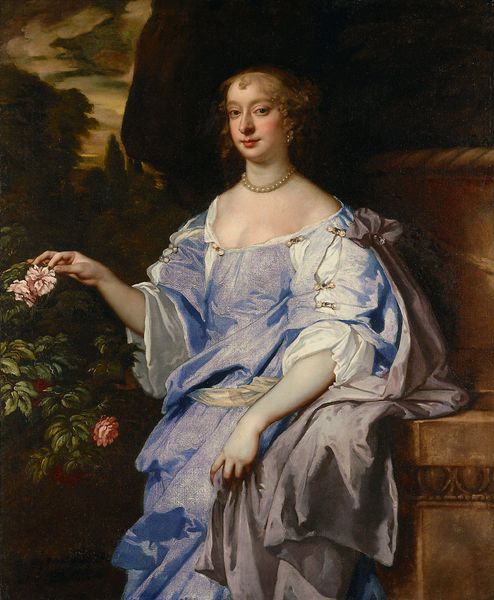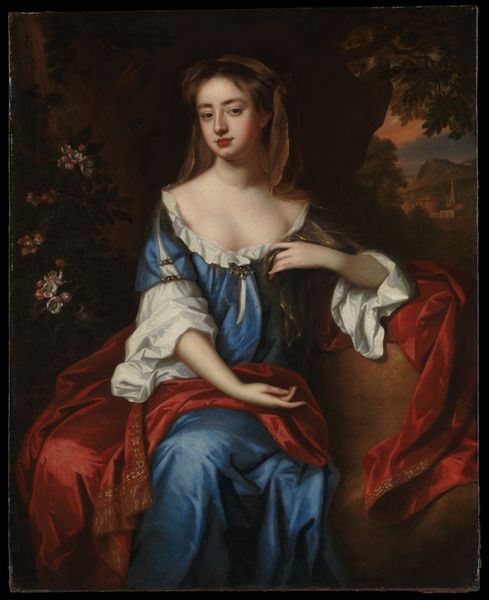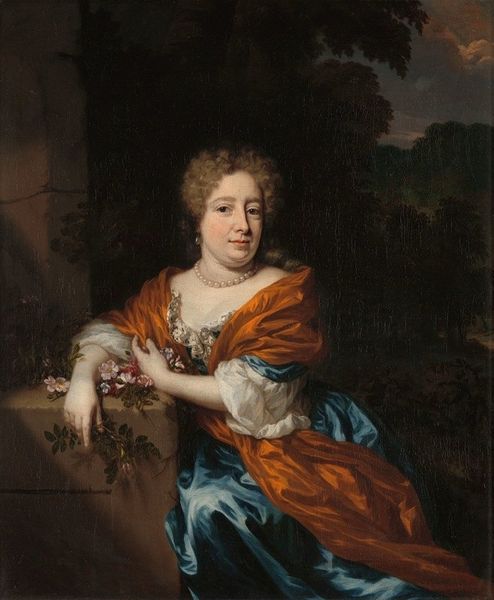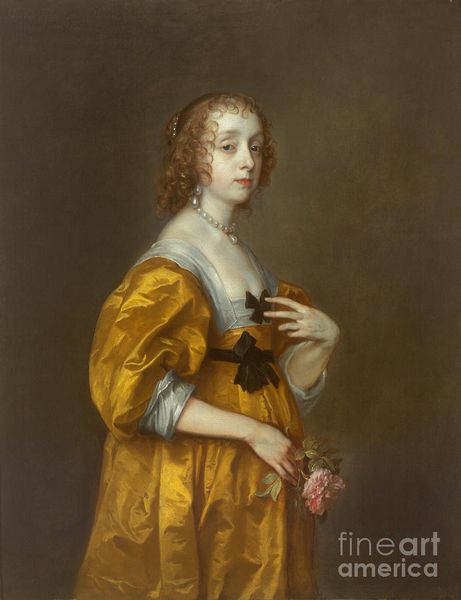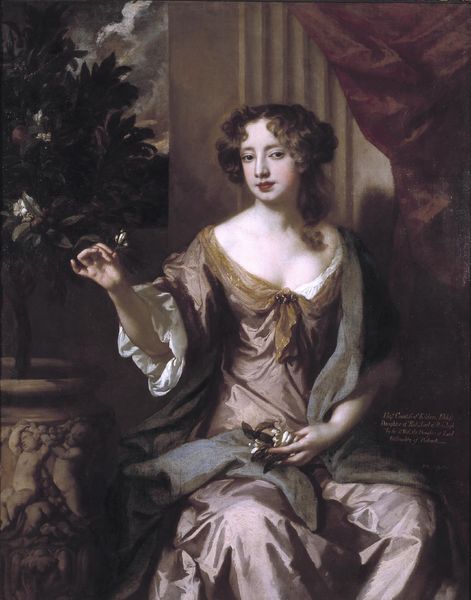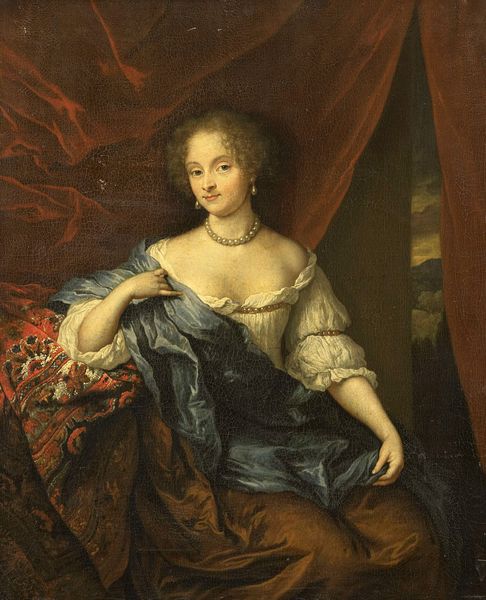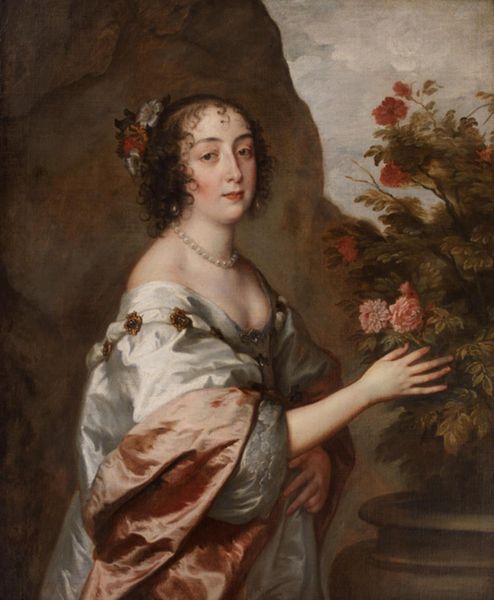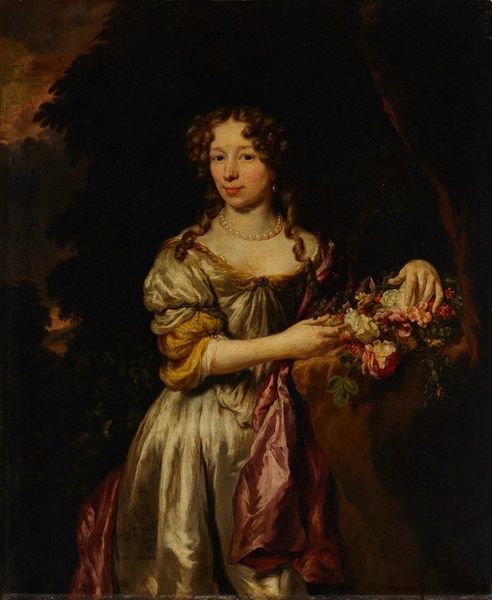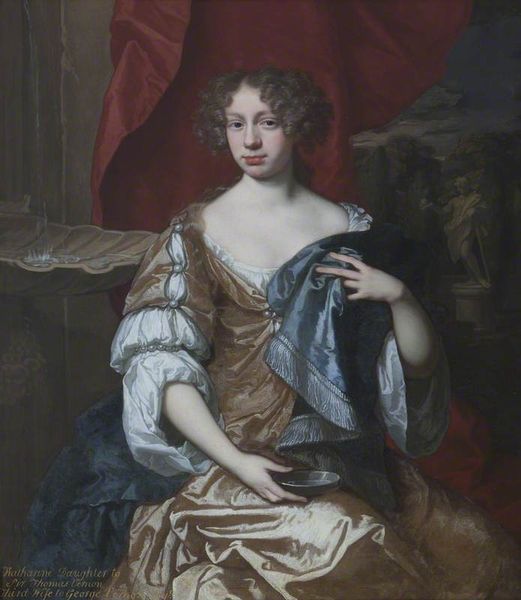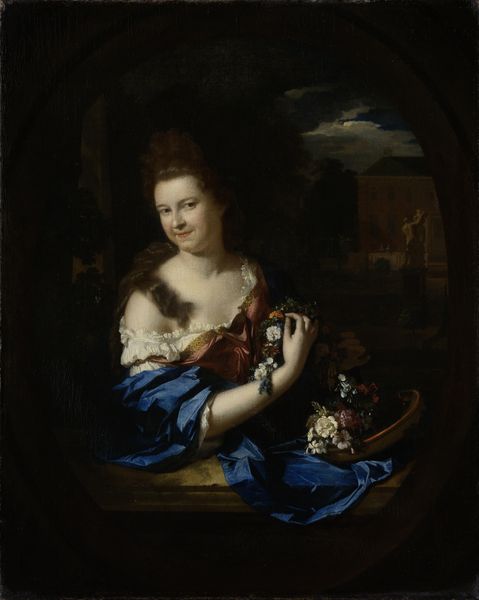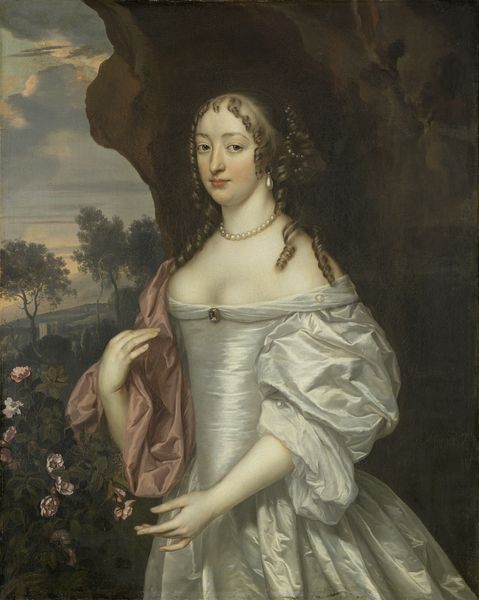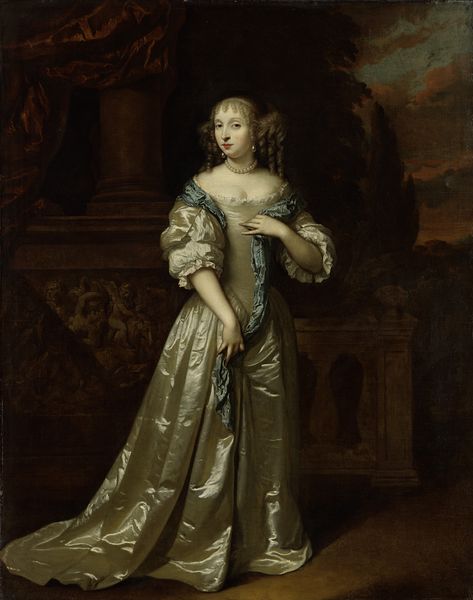
Portrait of Mary Stuart (1662-95), Wife of Prince William III c. 1683
0:00
0:00
painting, oil-paint
#
portrait
#
baroque
#
painting
#
oil-paint
#
figuration
#
oil painting
#
portrait art
Dimensions: height 80.5 cm, width 63.5 cm, depth 5.5 cm
Copyright: Rijks Museum: Open Domain
Editor: This is Caspar Netscher's "Portrait of Mary Stuart, Wife of Prince William III," painted around 1683. It's oil on canvas. The subject is quite imposing; the overall effect is rather opulent. What strikes you when you look at this piece? Curator: For me, this portrait reveals much about the politics of image-making in the Dutch Golden Age. Consider how portraiture served the aristocracy; it wasn't just about likeness. Notice the details—the rich fabrics, the elaborate setting. They're signaling power and status. How do you think the setting enhances Mary's position? Editor: It definitely elevates her! The garden scene with the classical sculptures gives her a sense of timelessness and grandeur. The Parrot perhaps refers to oversees trade, but that’s just speculation? Curator: Good observation. The parrot indeed introduces an element of exoticism, perhaps hinting at colonial wealth and the family’s reach. Beyond simply portraying her, it's communicating ideas about lineage, wealth, and dominion. To whom do you think such images would have appealed? Editor: Likely, these portraits were circulated among other nobles and potential allies to project their wealth and solidify their position in court, which may explains Mary Stuart and William sharing the throne with Parliament in the Bill of Rights 1689? Curator: Exactly. This painting highlights the relationship between art and the public image. These weren’t simply decorations but rather strategic displays of identity meant for select, powerful audiences. It helps us appreciate not just what the painting *is* but what it *does*. Editor: That’s such an interesting way of seeing it. I had only been focusing on Mary and the technical prowess but you pointed out so many underlying contexts. Curator: And you rightfully pointed out her poise and dress—essential elements to appreciate in considering the construction of her public persona. Every choice—clothing, background, accessories—is deliberate, contributing to the message.
Comments
No comments
Be the first to comment and join the conversation on the ultimate creative platform.
